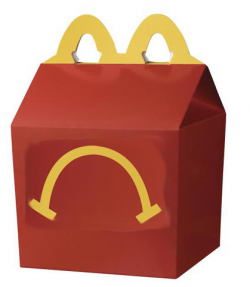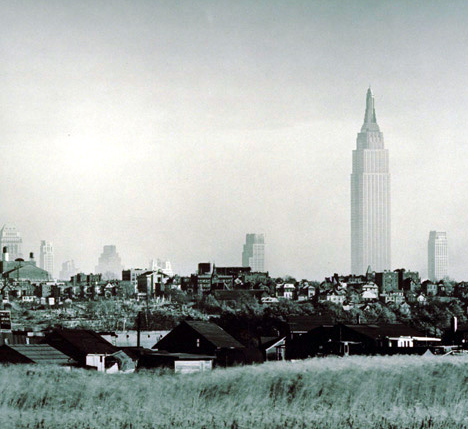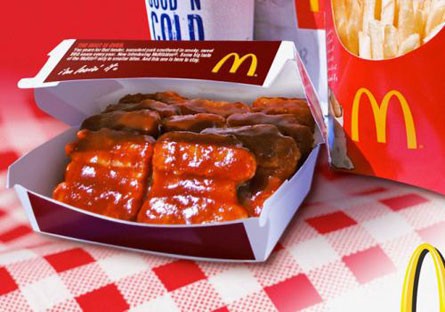When Grown Men Cry
My default setting is a cynicism so calcified that if you tried to cut it with a diamond-edged saw the saw would stick and you need to send down a pair of giant shears to retrieve it. But I have to say, watching the denouement of the Armando Galarraga/Jim Joyce episode (umpire Joyce’s botched call robbed Galarraga of a perfect game) yesterday, seeing Joyce fail to choke back his tears, thinking about the remarkably classy way the characters in this drama have handled this situation… for a brief second I was able to remember a time when I wasn’t suspicious of everyone and their motives. Thank God Galarraga got a Corvette out of the whole deal; it keeps me from being stuck on sincere. But still, that moment when I felt that swelling in my chest and could honestly believe that people are basically good and want to do the right thing and will own up to their failures and accept and forgive the failures of others when they happen? That was pretty nice too. Sports, man. No wonder it’s the only place in which dudes can express their emotions.
Hoax McRibble Too Beautiful To Exist

Sad news (for wild animals that eat out of dumpsters): “The McRibble,” as glorious and end-of-the-empire and probable as it may sound, is a hoax, McDonald’s tells Consumerist. Sure it is. The truth is out there, etc.
Hello, All That!
by Daniel D’Addario

Moving to New York used to be a choice-a creative one, despite its eternal popularity-for people so devoted to nurturing their creativity that they were willing to overlook the strains of actually, you know, living there. I speak not from experience, really, but from my reading. Edith Wharton’s writing career only truly began after Henry James advised her, “Use the American subject! Do New York! There it is round you.” New York forces its resident to serve as constant interpreter-laying out the whole of “the American subject” in the petty triumphs and real inequities one finds. I always, when I was a student and lived in New York, found this quote inspiring, or at least believed this quote was “inspirational.” Never mind that Wharton was an heiress whose New York could be “done” without struggle-New York was where it was all happening, for all of its residents willing to pay attention. Something universal, my generation’s Age of Innocence would come again out of this disparity that was our New York.
In a Lynn Hirschberg backlist marathon this week-no longer in the city, I find ways to fill my time-I found the 2003 profile of Sofia Coppola, another heiress of sorts whose experience of New York is dramatically different, I assume, from most. Still, she sounds just like millions of other New York artists, or just enraptured young people, when she says she chose New York over Los Angeles, at least to edit her movie: “I wanted to see people on the street, to walk to work.” Isn’t that at least the promise of New York-the feeling that in one’s walk to work something unusual or exciting might happen, that inspiration might strike? That you might suddenly find your subject. Or that the discovery wouldn’t be sudden at all but learned bit by bit with each new New York adventure?
When I decided to go to college in New York, I was in the midst of a deep fascination with Dorothy Parker and the Algonquin Round Table; I thought that the entire city was a “smart set” fueling one another’s creativity and productivity. I didn’t see Mrs. Parker and the Vicious Circle until the end of my sophomore year, at which point I realized that, when not putting out a magazine, these people sat around and drank all day and bitched at one another.
The Algonquin sorts are the Brorothy Parkers to the recent Observer-coined “BroBos,” who, in Leon Neyfakh’s article, “enjoy a utopian-seeming existence marked by strolls down tree-lined streets, carefully chosen foods and leisurely weekends spent in coffee bars and parks. An existence only occasionally marred by the realization that this is not the hopped-up New York they came to conquer.” Well, no. The New York they came to conquer is governed by ideas and actions. The New York they found is governed by an entrenched system of wealth and power near-impossible to surmount. So they decamped to what Neyfakh portrays as a state of permanent leisure. It’s like Florida for the young.
Oddly, this state is sort of enviable, denying maturation (both personal and-for artistic sorts-artistic). One can play Frisbee anywhere, but there’s a frisson of rebellion to doing it in New York, the hint of conscious dropping-out. It radiates out of the streets in Brooklyn, the sense of territory reclaimed for the young folks. Brooklyn’s appeal became real, for a moment, when I heard about a “BK job fair” at my college and immediately wanted to take part, despite myself. No matter, anyhow: it turns out Columbia was actually advertising positions at Burger King’s new Whopper Bar.
If these are the only ways that young people can live in New York-by carving out their own ethnographically unique borough in which grown-up concerns cannot penetrate, or by slinging Whoppers to pay an inflated rent-then maybe New York is not a narrative with an endpoint but an endless dialectic, a conversation already so loud that the young can’t even be heard.
I don’t have a compelling story to back up my assertions. I’m no Joan Didion or Jessica Roy. Nothing bad happened to me in New York; in fact, people were really kind to me! And I’m not going to need a plane to go to Brooklyn if I want to hang out with the Brooklynites I know. I’m moving to an apartment in the Westchester suburbs. Despite its nearness to New York, at a publishing party before my graduation, a friend and his very nice boyfriend thought that sounded terrible. “Stay where everything is happening,” the boyfriend urged.
I lamely protested that I wanted to save a bit of rent money. “Everyone lives without money. You make it work,” the boyfriend insisted. Maybe I’m not tough or smart enough to take part in that tradition, I thought! But when my friend, to whom I’d turned for advice in the past, told me to “maintain my momentum,” I wondered towards what destination momentum was meant to carry me.
I had to edit the previous sentence down from the inadvertently plagiaristic “I couldn’t help but wonder”-the topnote of Bradshaw overwhelmed my palate. In New York, I was constantly aware of (and just outside New York, have already begun to forget) the New York narratives overlaying my experience. No chance meeting had the sparkling dialogue of Michael Caine and Barbara Hershey in Hannah and Her Sisters, no walk inspired me to do the work of Wharton or Coppola; no internship was as good as Whitney Port’s. As the latest revitalizations of the Carrie Bradshaw myth (on film as experienced doyenne and in print as a young girl dreaming of Manhattan) indicate, no city is as fraught with narratives as is New York. It’s easy to fade into a torpor. Your narrative will most likely never be that interesting, and after some time in New York, it disperses altogether, leaving the desire to make sense of it all unfulfilled and also a bit ridiculous. At that same publishing party, a semi-famous young woman with a fluffy white dog and a quilted pink purse cut in front of me in the line to get a book signed. The momentum seemed to be lodging me in that queue; a row of characters waiting their turn for a plot.
What we-and by we, I very loosely mean people under thirty with liberal arts degrees or interests-need is a new narrative. I don’t know if it exists! It would valorize young energy on a staging-ground determined by young people. The examples of Carrie Diaries Carrie and of Whitney Port are constructed in fashions that bow to old and tottering industries and value systems that have nothing to do with how anyone I know lives. That staging ground is unclear to me, though I know it cannot be the seductive schoolyard that is Brooklyn. Maybe there should be a diaspora, where everyone takes their work to Portland and Baltimore and Tampa and Phoenix, and we all meet back here on the internet to see what was done. The Tweet life aside, one really can access the internet from anywhere-but one can only divorce oneself from the aimless, strenuous feeling of wanting more and wanting out in equal parts when outside New York.
Daniel D’Addario has written about college for The Daily Beast and IvyGate and about movies for Newsweek.
Jersey Mayhem: Image-Conscious Chihuahuas Escape Embarrassing Car

“The Monmouth County Society for the Prevention of Cruelty to Animals is looking for two men believed to have thrown two dogs out of a moving vehicle Tuesday night, officials said.”
–The Asbury Park Press on eye-witness reports of chihuahuas flying out of the window of a “lime green, four-door, Mitsubishi-type vehicle” driving on Bayside Parkway in Middletown, New Jersey. Come on, those dogs totally jumped. Anybody who knows anything about chihuahuas knows they wouldn’t be caught dead in a car like that. (The chihuahuas, one male and one female, were treated for minor injuries at the Red Bank Animal Hospital and released to the SPCA.)
Cats Will Make Us All Nuts
“IF AN alien bug invaded the brains of half the population, hijacked their neurochemistry, altered the way they acted and drove some of them crazy, then you might expect a few excitable headlines to appear in the press. Yet something disturbingly like this may actually be happening without the world noticing.” I’ll give it away and tell you that they’re talking about toxoplasmosis, but you should read the whole thing: not only is it very interesting, it confirms my belief that people who own cats are totally crazy.
The Curious Case of The McRibble (And The McRib)
by Mary Shyne

Did eating the KFC Double Down merely compromise your kidneys? Now you can finally push your digestive system over the edge. Introducing: McRibbles.
Check your calendar. Is it April 1st? It is not. This recently-leaked ad might still be a hoax, but at least we know it’s not a seasonal prank. And if it is indeed a joke, it is a rather cruel one to play on the nation’s McRib aficionados, who are at this very moment lost in reverie over the idea that they will soon be able to enjoy their boneless, bastardized meat in a more elegant manner befitting the finest hors d’oeuvres.
Sophistication aside, purists will raise the obvious question: Why complicate a classic? Of course, the glossy Photoshop gleam lends these bite-size porkish products an edible aesthetic, but consider the logistics of actual consumption. How is the average gourmand to enjoy these slathery nuggets without sustaining intolerably glutinous fingers? Perhaps they are served with cutlery, or a wet-nap. (And, hopefully, an antacid.)
Despite the surfeit of feverish Internet speculation, based solely on this one picture floating around the web, McDonald’s has released no information about the McRibbles-a stark contrast to media blitz that preceded the introduction of the Double Down. But then the McRib has always cut a shadowy figure-mysterious in both its composition and its availability.
Since it first released the McRib in 1981, McDonald’s has constantly confused the consumers who grew devoted to the product. Pulled from the market after poor sales, the McRib reared its saucy, pork-flavored head once again in 1994 as a promotional tie-in to the Flintstones movie (presumably at the request of John Goodman).
The ultimate tease came in 2005, where McDonalds launched a two-pronged marketing campaign-simultaneously staging a “McRib farewell tour” while acting as the organizers of an online “Save the McRib” campaign. Three subsequent McRib tours have satisfied/taunted America.
At least Shamrock Shake followers-another sect of McDonald’s deranged cultists-can be assured of a Saint Patrick’s Day-centered release date. A quick chat with “AJ” on the McDonald’s hotline yielded no such information about McRib or McRibbles. While the McRib tours happened last fall, the much-referenced McRib locator reports a McRib sighting in New York City as recently June 3rd-yes, this very day!

It is exactly this elusiveness that contributes to unparalleled McRib fanaticism. Does the readily-available Big Mac get this sort of devotion? (Well, maybe from this guy.) The McRib even achieved its apotheosis as an American cultural meme in 2003, when it was parodied on “The Simpsons.”
It seems McDonald’s has stumbled upon the greatest marketing tactic of all: turning its sandwich into an urban legend. Specialty items at other fast food chains-like the Chipotle Chicken/Asian Chicken at Wendy’s or, arguably, Burger King’s salads-are too easily accessible to generate mystique. Perhaps sensing the wisdom of McDonald’s approach, Taco Bell only puts its Cheesy Gordita Crunch on the menu sporadically. (Spoiler alert: You can special order them!) Like Big Foot, McRib sightings are rare and its taste questionable.
Proponents of the McRib-and there are some-seem to enjoy the taste despite (because of?) its disturbing similarity to elementary school cafeteria fare. The hype machine behind the Double Down–KFC’s specialty item-might have generated a thousand “taste-and-reaction” videos across the blogosphere, but did any of those brave tasters have much more of a reaction than “I need water immediately”?
McRibbers, on the other hand, seem to genuinely enjoy the spongy meat-like product and the cloyingly sweet barbecue sauce in which it is draped. If these pint-sized McRibs are real and not an elaborate extension of the McRib viral campaign, will devoted McRibbers be willing to make the conversion from hand-held to McRibble? Given current consumer preferences, where products continually grow smaller to indicate innovation and complexity, it is quite possible that they will. Do keep in mind that we are talking about fast food, though: People want to shovel as much of that crap into themselves as cheaply as possible. Perhaps a super-sized bucket of McRibbles will prove a happy solution.
UPDATE: There appears to be a somewhat tragic resolution to this story.
Mary Shyne is a recent NYU graduate, Bushwick-based writer, and fast food connoisseur. She blogs about fast food here.
Israel May "Ease" Gaza Blockade + The Headlines in Turkey
This just in: “Israeli Prime Minister Benjamin Netanyahu could ease the blockade imposed on Gaza following international criticism of the deadly raid on an aid flotilla, Israeli media reported on Thursday.” Wow. Also! It’s always an interesting experiment when you switch it up and try some other news from non-American papers. “Gaza-bound flotilla activists given hero’s welcome in Turkey” about sums it up from the English language papers in Turkey.
'Times' Lawyers Send Catty Trademark Slap to 'WSJ'

With the rise of the Wall Street Journal’s New York section has come the realization that the WSJ and the New York Times are two silly, squabbling children. This schtick was fun and profitable when the Post and the Daily News did it-but that scheme isn’t going to work in this case. The endless back and forth has already become sad: now their legal departments are bitching each other out over trademarked language in their competing promotions. Also, you know what’s uncalled for, from a lawyer? “After an exhausting search of our records, we find no indication that you ever received permission to make use of our unique and proprietary Slogan.” Really? Exhausting?
Guatemala's Sinkhole Not Actually a Sinkhole

It’s not even one of the top three ongoing natural disasters, right, but this photo tour of Guatemala after dual assault by volcano and tropical storm is pretty astonishing. Though, by the way: that famous sinkhole? Not actually a sinkhole. Technically. And: “Mislabeling the problem as a ‘sinkhole’ could distract from discussion of a solution, which [Geologist Sam Bonis] said would involve finding new ways to deal with runoff and waste water in the city.”
AT&T's New Data Charging Scheme: It Is Explained!

I knew-because I saw a ton of pieces online about how the new AT&T; data pricing was a great thing for America!-that actually it will be not at all a good thing. It is a delight to feel vindicated. Let the machine that writes Felix Salmon’s blog posts explain: “AT&T; could easily have saved consumers all the trouble of having to try to predict their next month’s data usage by having a single plan: $15 for the first 200 MB, say, and then $10 per GB thereafter. They didn’t, because they’re looking forward to getting $30 per month from people exceeding 200 MB of data but who use nowhere near the 2 GB that ‘Pro’ users get for $25.” MM HMM.
